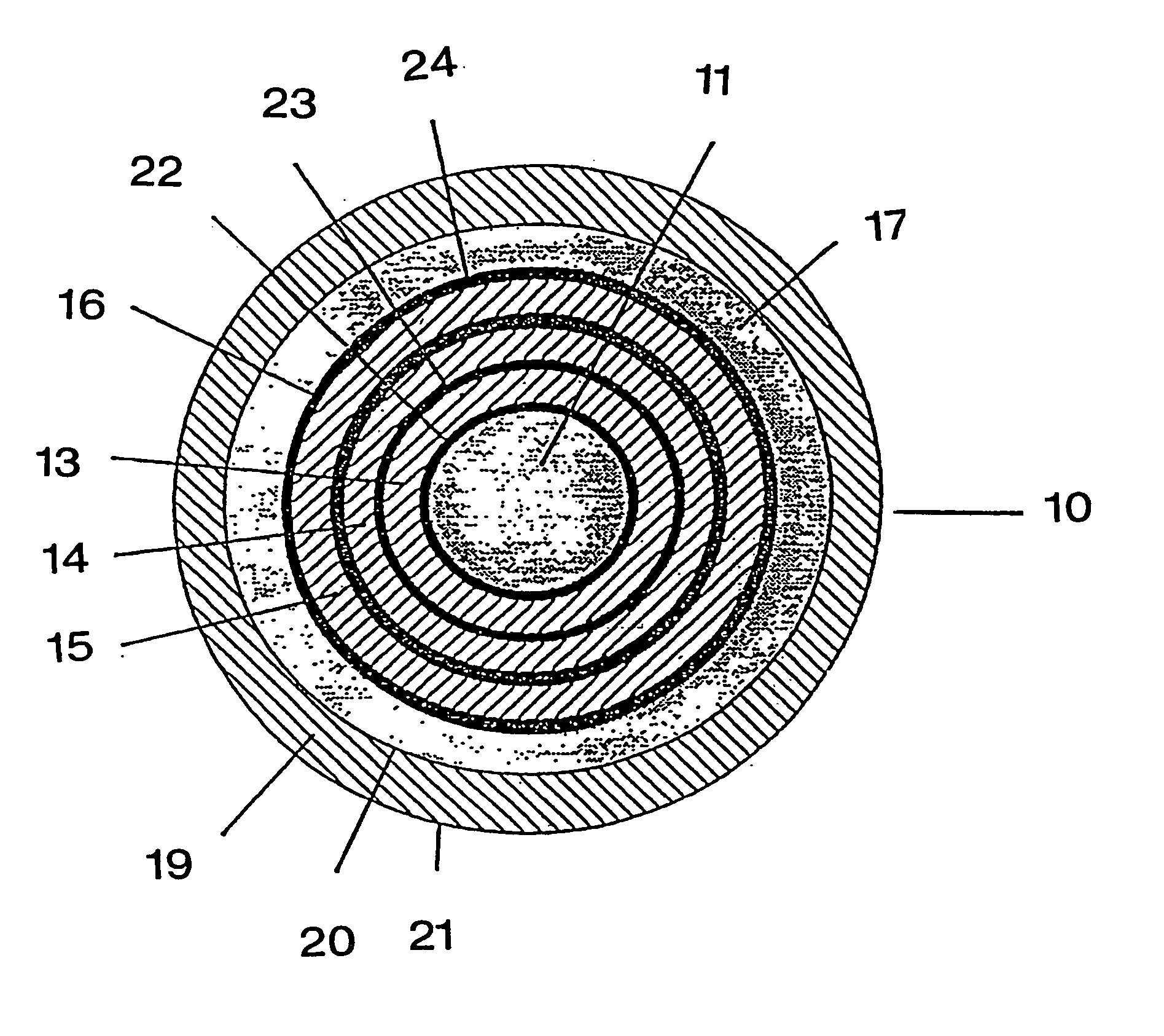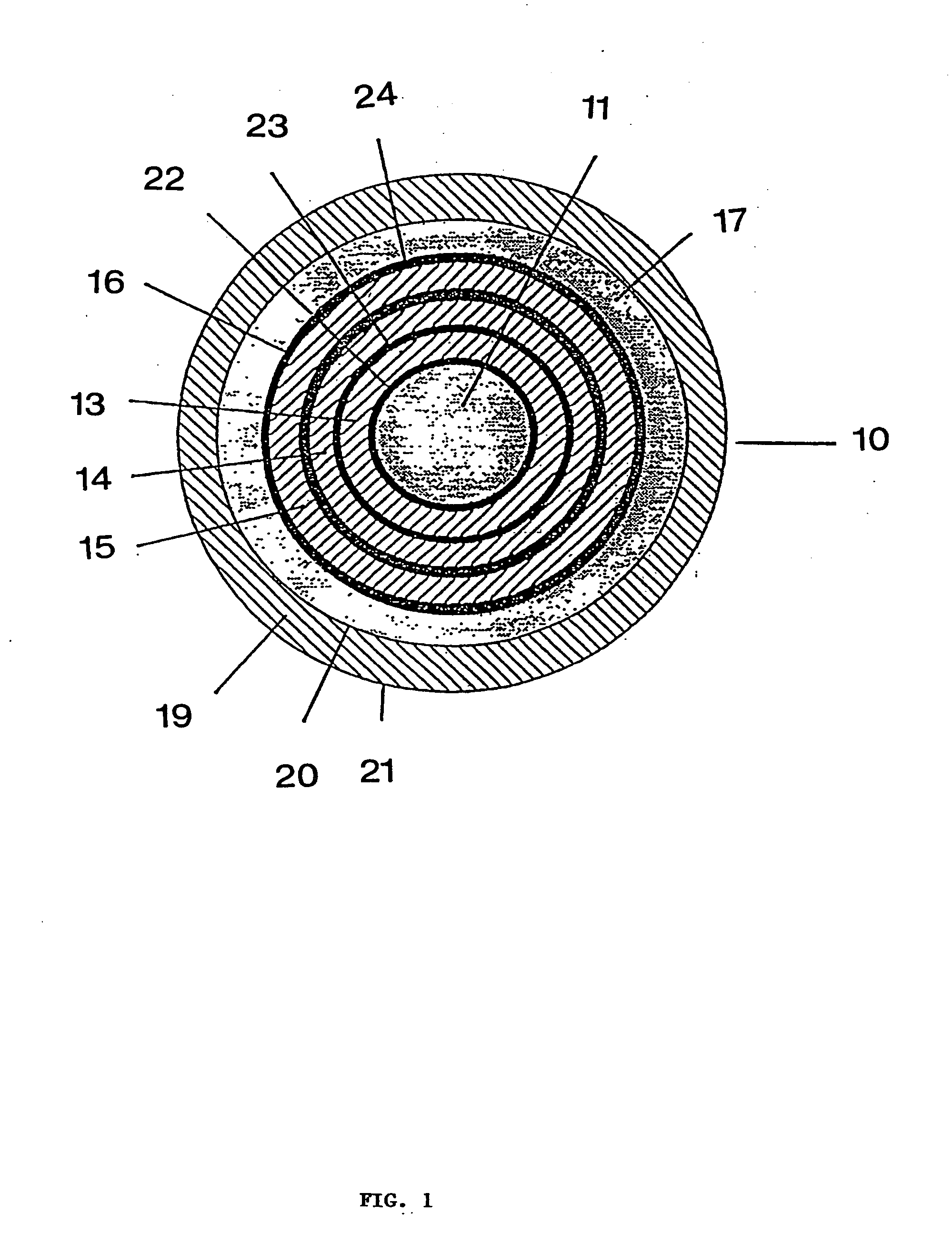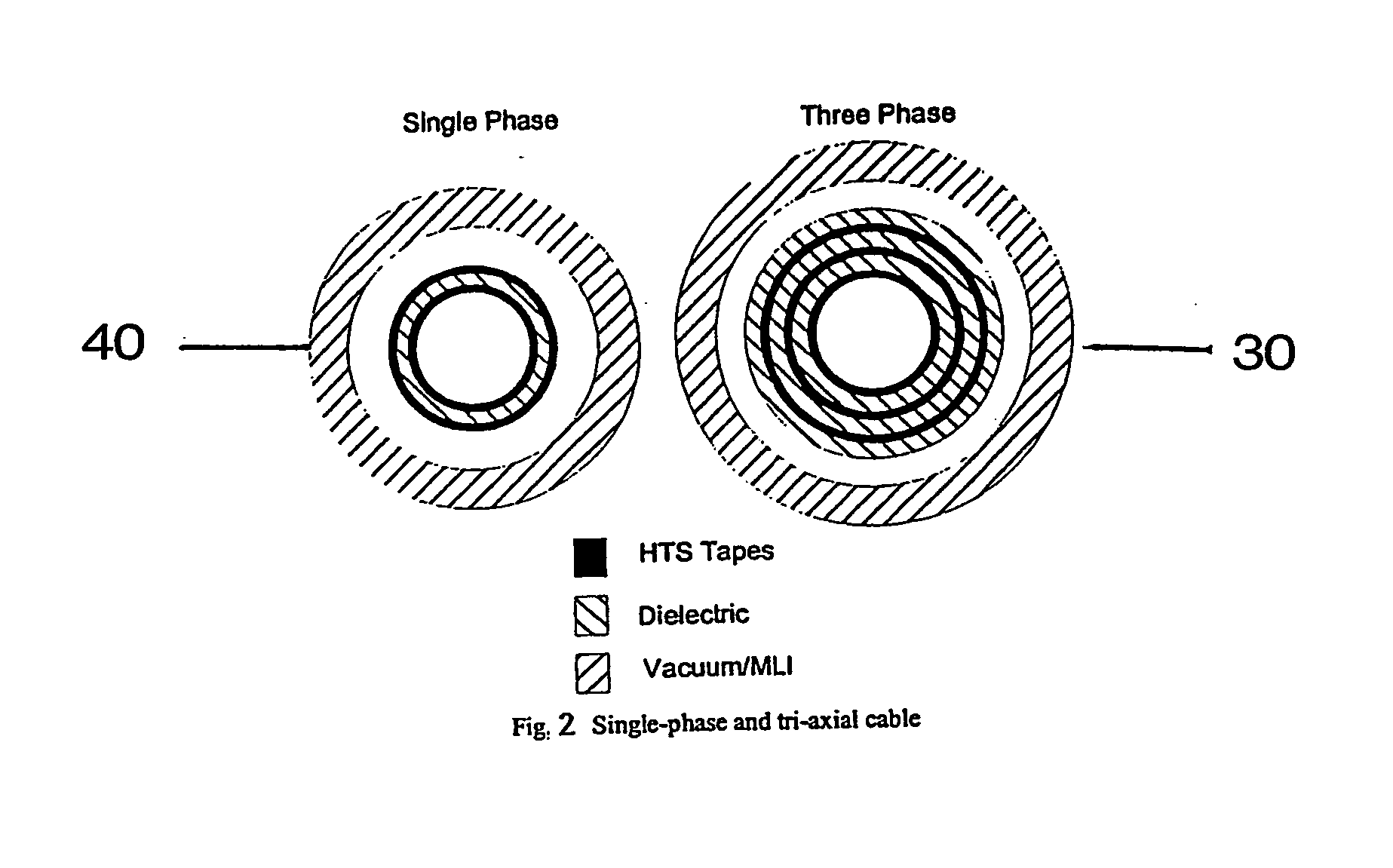Triaxial hts cable
a superconducting cable and triaxial technology, applied in the direction of superconducting magnets/coils, superconducting devices, magnetic bodies, etc., can solve the problems of material availability not previously available as wires, cables, films, etc., and achieve the effect of avoiding energy loss of superconducting materials employed under alternating current and limiting the application of superconducting materials to a large scal
- Summary
- Abstract
- Description
- Claims
- Application Information
AI Technical Summary
Problems solved by technology
Method used
Image
Examples
Embodiment Construction
[0030] A 1.5-m long tri-axial HTS cable was fabricated for evaluation of its superconducting properties with DC and AC currents. FIG. A shows a sketch of the end of the tri-axial cable. A stainless steel former was used to wind the cable on. Each phase consists of two layers of BSCCO-2223 HTS tapes. They are separated by Cryoflex.TM. cold dielectric tapes. A layer of Cu-tape was also added at the OD of the triax as a shielding ground. The cable was rated for 1250 A-rms per phase.
[0031] For the electrical testing of the cable, voltage taps were added on each of the three phases. One of the voltage leads was pulled to the other end of the cable to join with the other lead before the dielectric and the next HTS phase were wound on. The actual voltage lead length is 1.54 m, 1.24 m, and 0.91 m for phases 1 to 3, respectively. The G-10 insert shown in FIG. A was added for the purpose of a calorimetric measurement of the AC losses of the cable. Two type-E thermocouples were attached on the...
PUM
 Login to View More
Login to View More Abstract
Description
Claims
Application Information
 Login to View More
Login to View More - R&D
- Intellectual Property
- Life Sciences
- Materials
- Tech Scout
- Unparalleled Data Quality
- Higher Quality Content
- 60% Fewer Hallucinations
Browse by: Latest US Patents, China's latest patents, Technical Efficacy Thesaurus, Application Domain, Technology Topic, Popular Technical Reports.
© 2025 PatSnap. All rights reserved.Legal|Privacy policy|Modern Slavery Act Transparency Statement|Sitemap|About US| Contact US: help@patsnap.com



